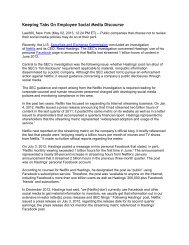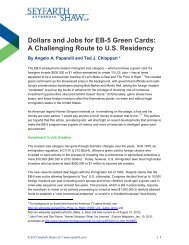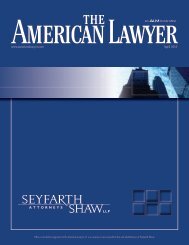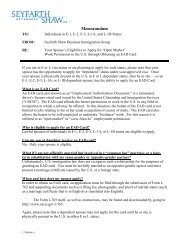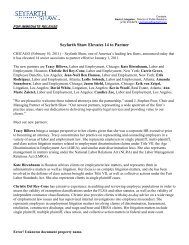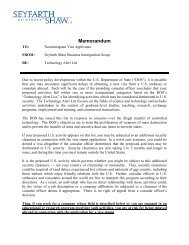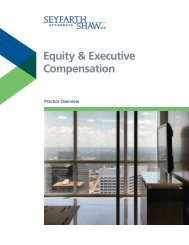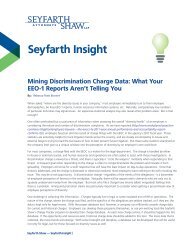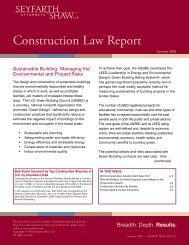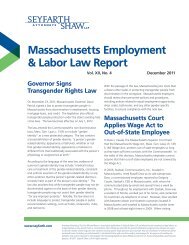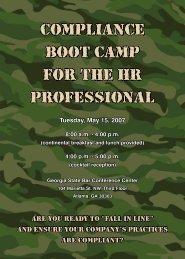Litigating California Wage & Hour and Labor Code Class Actions
Litigating California Wage & Hour and Labor Code Class Actions
Litigating California Wage & Hour and Labor Code Class Actions
You also want an ePaper? Increase the reach of your titles
YUMPU automatically turns print PDFs into web optimized ePapers that Google loves.
Other decisions, however, have reached contrary conclusions. In early 2010 the <strong>California</strong> Court of<br />
Appeal, in an order reversing the denial of class certification, held that difficulty <strong>and</strong> expense in<br />
reconstructing time records may itself constitute evidence of injury. 217 (Notably, the plaintiffs’<br />
226 claim was not purely derivative of their misclassification <strong>and</strong> meal- <strong>and</strong> rest-break claims.) And<br />
in Kisliuk v. ADT Security Services, Inc., 218 a federal district court interpreted the “injury”<br />
requirement to refer to the mere violation of a legal right, not damages. 219<br />
The other important dispute over the construction of Section 226 concerns the meaning of the<br />
phrase “knowing <strong>and</strong> intentional.” This st<strong>and</strong>ard appears, on its face, to differ from the st<strong>and</strong>ard for<br />
awarding waiting time penalties under <strong>Labor</strong> <strong>Code</strong> Section 203, which is mere “willfulness.”<br />
Normally, if an employer is conscious that it committed an act, <strong>and</strong> if the employer lacks a<br />
reasonable basis for believing the act is lawful, then the act is “willful” for purposes of Section 203<br />
even where the employer lacked bad faith or an intention to break the law. 220 Although this<br />
statutory interpretation departs from the common-sense underst<strong>and</strong>ing of the term “willful violation,”<br />
it furthers a strong public policy favoring payment of final wages to an employee (who may depend<br />
on such wages for survival), so there is a colorable reason to use a broad interpretation of<br />
“willful.” 221<br />
With wage statement violations, by contrast, any injury to the employee is often purely theoretical.<br />
Employers contend there is no strong public policy reason to hold them liable for penalties totaling<br />
thous<strong>and</strong>s (or even millions) of dollars merely because they were ignorant of a technical<br />
requirement as to what should appear on an itemized wage statement. Accordingly, they believe<br />
there is no strong reason to assume the Legislature intended to equate “knowing <strong>and</strong> intentional”<br />
with “willful.” Several district court decisions have now granted summary adjudication against a<br />
claim for penalties on the ground that while the wage statements violated Section 226(a), there was<br />
no evidence that the employer knew of Section 226 <strong>and</strong> intended to violate it. 222<br />
217<br />
218<br />
219<br />
220<br />
221<br />
222<br />
Jaimez v. Daiohs U.S.A., Inc., 181 Cal. App. 4th 1286 (2010) (“While there must be some injury in order to recover<br />
damages, a very modest showing will suffice.”); see also Wang v. Chinese Daily News, Inc., 435 F. Supp. 2d 1042,<br />
1050 (C.D. Cal. 2006) (where “wage statements consistently reflect 86.66 hours worked (regardless of numbers of<br />
hours actually worked) <strong>and</strong> omitted hourly wages paid,” an employee “suffers injury” because the employee might not<br />
be paid for any overtime, is prevented from challenging overtime rate paid, <strong>and</strong> has to incur expense of hiring experts to<br />
reconstruct pay records); Perez v. Safety-Kleen Sys., Inc., 2007 U.S. Dist. LEXIS 48308 (N.D. Cal. June 27, 2007)<br />
263 F.R.D. 544 (C.D. Cal. 2008).<br />
See id. at 547-48 (plaintiff does not have to allege injury synonymous with actual damages to maintain claim under<br />
§ 226(e)).<br />
Barnhill v. Robert & Saunders Co., 125 Cal. App. 3d 1, 7 (1981).<br />
See id. at 7-8 (explaining public policy underlying Section 203).<br />
See Harris v. Vector Marketing Corp., 656 F. Supp. 2d 1128, 1145-46 (N.D. Cal. 2009) (summary adjudication<br />
warranted on plaintiff’s § 226(e) claim where dispute existed as to whether plaintiff was independent contractor or<br />
employee <strong>and</strong> record lacked evidence that conduct was knowing or willful); Reber v. AIMCO/Bethesda Holdings, Inc.,<br />
2008 WL 4384147 (C.D. Cal. Aug. 25, 2008) (summary adjudication appropriate on plaintiff’s § 226 claim because of a<br />
good faith dispute as to whether employees are exempt precludes finding defendant’s conduct was knowing <strong>and</strong><br />
Seyfarth Shaw LLP | www.seyfarth.com <strong>Litigating</strong> <strong>California</strong> <strong>Wage</strong> & <strong>Hour</strong> <strong>Class</strong> <strong>Actions</strong> (12th Edition) 52



